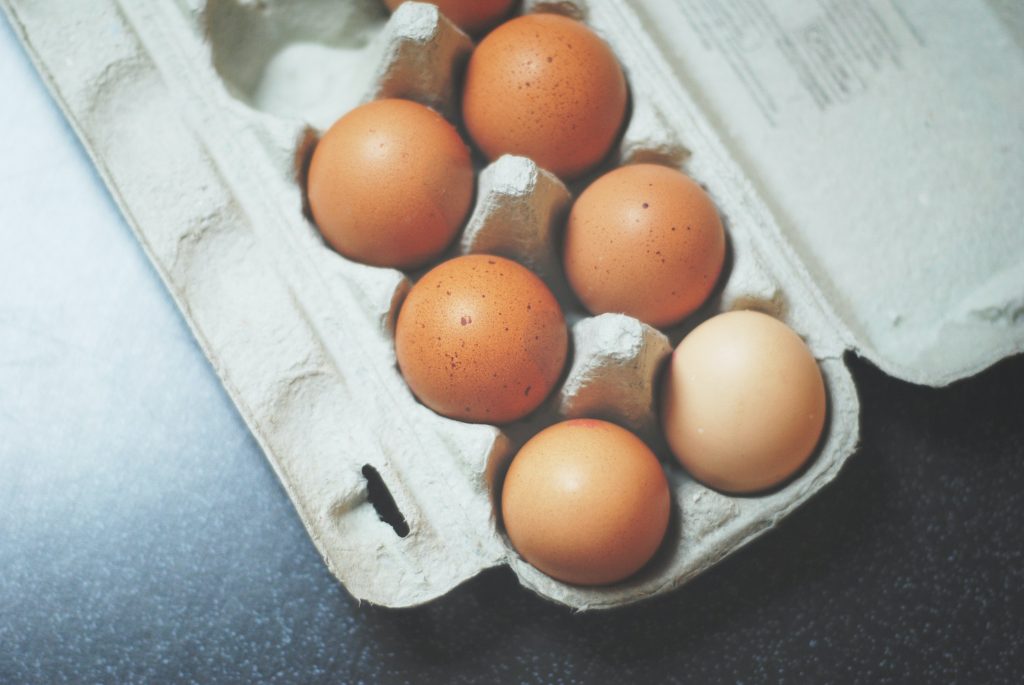Egg Prices Are Finally Falling, But It Likely Won’t Last Long, Here’s Why
Egg prices have dropped at least 7 percent since February, but they are predicted to rise again due to mitigating factors like the upcoming Easter holiday and a continuing bout of avian flu.
This article is more than 2 years old

The timing couldn’t be better. Retail egg prices, which recently hit a record high, are finally starting to move in the friendly direction – down. While that is great news for the moment, Easter is on the horizon, so just how long will egg prices dip?
Across the board, the average egg price in February dropped nearly seven percent as compared to the horrendous prices seen in January. A closer inspection saw a dozen large Grade A eggs dip 13 percent, from $4.82 a dozen to $4.21 a dozen. According to the Federal Reserve Bank of St. Louis, which tracks egg prices, the $4.82 average egg price was a record high.
The drop in February was the first seen in egg prices since September 2022. Although prices are beginning to fall, they still remain nearly 55 percent higher than what was seen a year ago, a price increase that is one of the largest seen of any consumer goods. This same Large Grade A eggs price sat at $1.93 per dozen at the start of 2022.
Michigan State University’s food economist, David Ortega, says “We’re seeing wholesale prices start to come down.” But he, like many other economists, does not believe the price drop will last. The reason for this is twofold – Easter and the avian flu.
Let’s tackle Easter first. We are only halfway through March and still a month or so away from Easter, but egg prices have already scooted up 16 percent, so says Angel Rubio, a senior analyst and wholesale market tracker at Urner Berry. Another reason that the egg prices are dipping and rising is general inflation which sees higher soybean and corn prices, making it more expensive for farmers to feed their hens.
These prices are also kept high as the cost of labor and transportation continues to rise as well. It usually takes a little bit of time before these costs are transferred to consumers, but the rise is already being felt. With Easter soon here, don’t expect egg prices to drop.
The second, and main reason, for egg prices soaring to record heights was the avian flu that hit the market hard. The flu was first discovered in January 2022 when it was found in a South Carolina American wigeon duck. From there, the avian flu spread like wildfire.
The losses were extraordinary. To date, nearly 53 million birds have died, most of them culled through flock “depopulation.” It was the only way to keep the flu from spreading.
Back in the 2014-15 bird flu outbreak, the virus was spread by farm-to-farm transmission. This time, though, the avian flu was being spread by wild birds. Wherever they traveled, the bird flu and death would follow, and egg prices would skyrocket.
“We don’t know exactly what it is about it, but it does seem just to be able to grow and transmit better in wild birds,” said Richard Webby, director of the World Health Organization’s Collaborating Center for Studies on the Ecology of Influenza in Animals. “Wild birds are the perfect mechanism to spread a virus because they, of course, fly everywhere,” he added.
For this reason, it has been much more difficult to get a handle on this version of the avian flu. Scientists are calling this outbreak much more lethal and widespread as the flu has been detected in wild birds in every state in the U.S. The typical avian flu doesn’t see wild birds getting sick, but this one appears to be much more virulent.
“We’re seeing symptoms and we’re seeing mortality in some of the wild birds,” says Phillip Clauer, a poultry scientist at Penn State College of Agricultural Sciences. “This time around, it’s more deadly.” And the range of birds it is being seen in is shocking.
So far, the range of bird species this version of the avian flu is being seen in includes geese and black vultures. There have also been recent reports of the flu being found in red-tailed hawks, great-horned owls, and even bald eagles. These avian flu outbreaks usually begin when commercial flocks or even backyard flocks are infected by wild birds, such as geese.
When an infection is discovered and a flock becomes infected, the entire flock is euthanized by the USDA. “This highly pathogenic disease is very deadly,” explained Clauer to NPR. “So the whole idea is to get on top of it and help the birds die in a humane manner and not allow the disease to continue to spread.”
As a way to try to limit the avian flu from infecting their flocks and raising egg prices, farmers are stepping up their biosecurity measures by building better barriers so wild birds cannot land near them. Not only are better barriers being built, but farmers are also taking better precautions. The virus, which is spread through bird droppings or their feathers, can be mitigated by farmers wearing gloves to keep their hands clean, as well as making sure their clothes and shoes remain clean as well.
According to the CDC, humans are at a low risk of contracting the avian flu. They say that this type of flu poses little risk to people, although they did see one case in Colorado last year. The infected person survived.
While the CDC is doing all it can to make sure the virus is eradicated, which is why egg prices remain on the high side, they also want you to know there is no risk to the country’s food supply. They say as long as the food is handled properly – heating food to an internal temperature of 165° F – will kill any virus or bacteria present including the avian flu virus.
Although there hasn’t been a new confirmed case of the avian flu since December, it is still unknown if the avian flu has finally passed. “We don’t know,” says Dr. Yuko Sato, a veterinarian at Iowa State University. “We hope we’re somewhere in the middle or hoping towards the end,” she added. “Nobody likes to be, you know, depopulating, euthanizing birds.”
With that in mind, it takes time to start repopulating egg-producing farms. According to Sato, it will take anywhere from 16 to 18 weeks before the baby chicks mature enough to start laying eggs. So, until the egg supply can be rebuilt, expect egg prices to remain steady (aka high), at least until the Easter holiday has ended.






